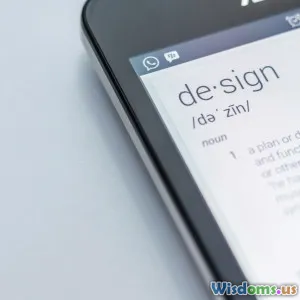
The Evolution of Graphic Design Trends
5 min read Explore the journey of graphic design trends from past to present, uncovering how creativity shapes visual communication. (0 Reviews)
The Evolution of Graphic Design Trends
Graphic design is an ever-evolving field that reflects and shapes culture, technology, and communication. Over the decades, graphic design trends have transformed substantially, influenced by various factors such as advancements in technology, changing societal needs, and artistic movements. This article explores the key phases in the evolution of graphic design trends, highlighting how creativity plays a pivotal role in this dynamic discipline.
The Early Years: Art Nouveau to Bauhaus (1890s - 1930s)
Graphic design's roots can be traced back to the late 19th century with the rise of the Art Nouveau movement. Characterized by ornate typography and organic forms, Art Nouveau was pivotal in breaking away from the rigid structures of traditional design. The movement emphasized creativity and aesthetics, setting a precedent for future styles.
In the 1920s, the Bauhaus school emerged, advocating for functional design and the unity of art and technology. The Bauhaus movement stripped design down to its essentials, promoting simplicity and geometric forms. This period was crucial in laying the foundation for modern graphic design, emphasizing the importance of usability and accessibility in design.
Mid-Century Modernism: Clean Lines and Bold Colors (1940s - 1960s)
The post-World War II era ushered in a new wave of design characterized by modernism. Designers like Paul Rand and Saul Bass embraced minimalism, employing clean lines, bold colors, and simplified forms. The use of white space became a vital design element, allowing for clarity and focus on content.
This era also saw the rise of branding, with companies recognizing the importance of visual identity. Graphic design became a powerful tool for marketing, leading to iconic logos and advertising campaigns that are still celebrated today.
The Digital Revolution: From Print to Pixels (1980s - 2000s)
The advent of computers in the 1980s revolutionized graphic design. Software like Adobe Photoshop and Illustrator transformed the design process, allowing for greater creativity and experimentation. Designers could now manipulate images and typography with unprecedented ease, leading to a surge in innovative styles.
The 1990s and early 2000s were marked by bold experimentation, with designers exploring gradients, shadows, and complex graphics. However, this period also faced criticism for cluttered designs and overly complex visuals, prompting a return to simplicity in the following years.
The Rise of Minimalism and User-Centric Design (2010s - Present)
In recent years, minimalism has dominated graphic design trends. Influenced by the mobile revolution and the need for responsive design, simplicity has become key. Designers are focusing on user-centric approaches, ensuring that visuals are not only aesthetically pleasing but also functional and easy to navigate.
Flat design, characterized by simple shapes and vibrant colors, emerged as a response to the skeuomorphic designs of the past. This trend emphasizes usability, ensuring that designs are accessible across various devices and platforms.
Additionally, the rise of social media and digital marketing has further shaped graphic design trends. Visual storytelling and engaging graphics have become essential for brands looking to connect with their audiences in a crowded digital space.
Conclusion: The Future of Graphic Design Trends
As technology continues to evolve, so will graphic design trends. The integration of augmented reality (AR) and artificial intelligence (AI) is already beginning to influence how designers create and interact with their work. Emerging trends such as dynamic logos and personalized experiences are set to redefine the landscape of graphic design.
Ultimately, the evolution of graphic design trends showcases the power of creativity in shaping visual communication. As designers adapt to new challenges and mediums, the potential for innovation remains limitless, ensuring that graphic design will continue to inspire and engage audiences for years to come.
Rate the Post
User Reviews
Popular Posts





















